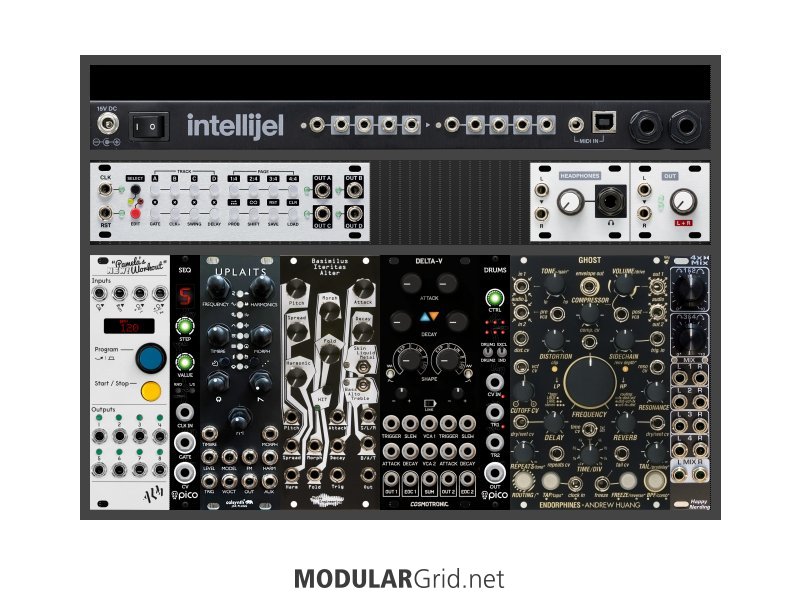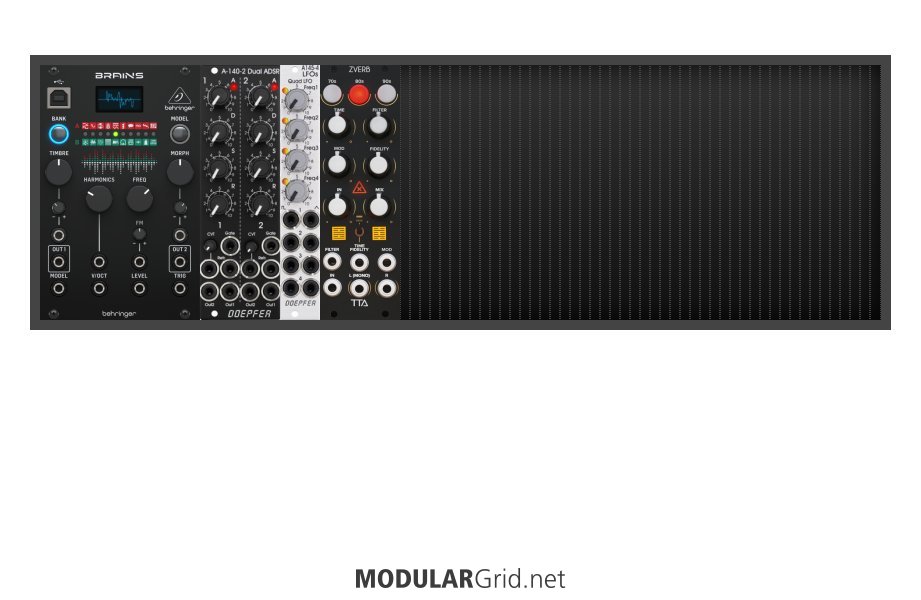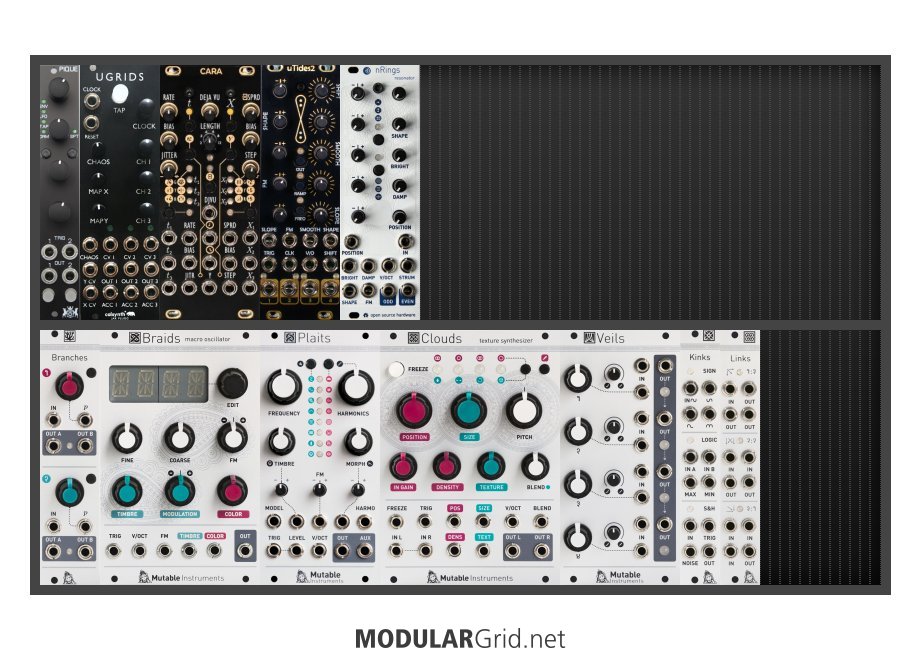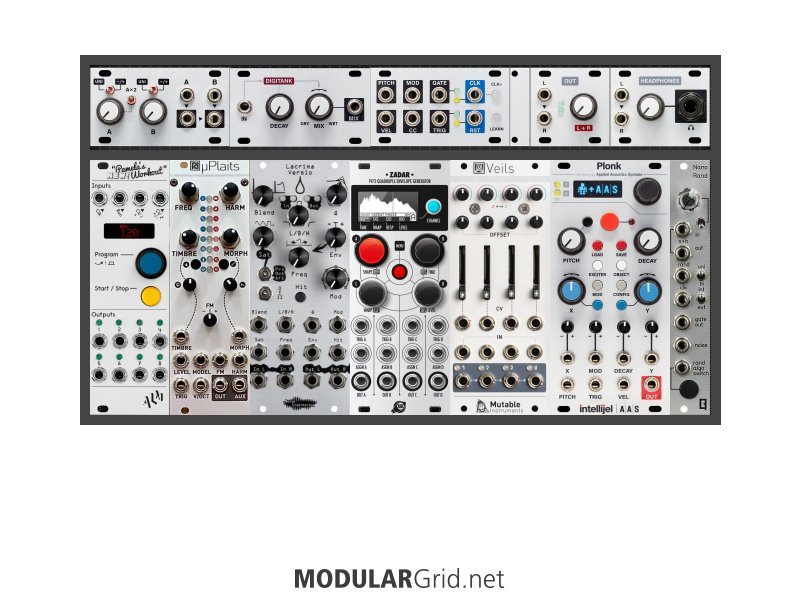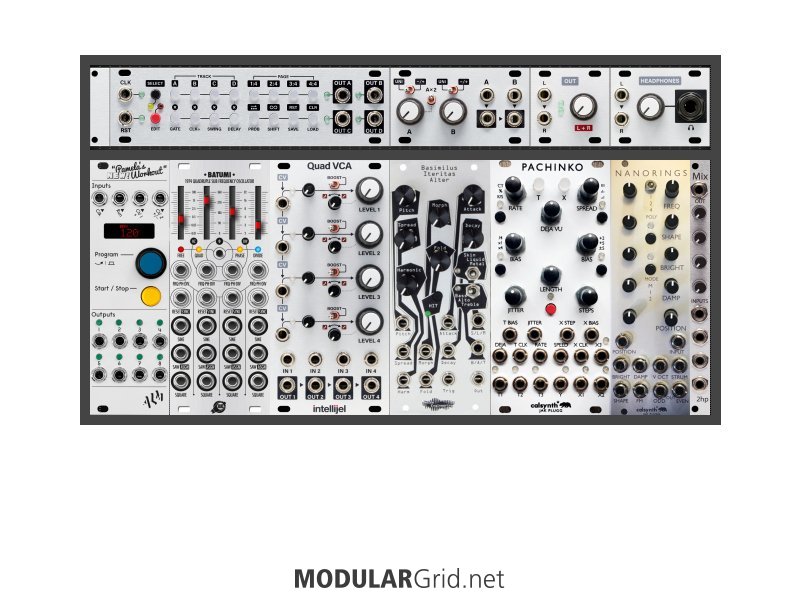My current rack is this 7U Intellijel that is 100% full (except for the 1U row):
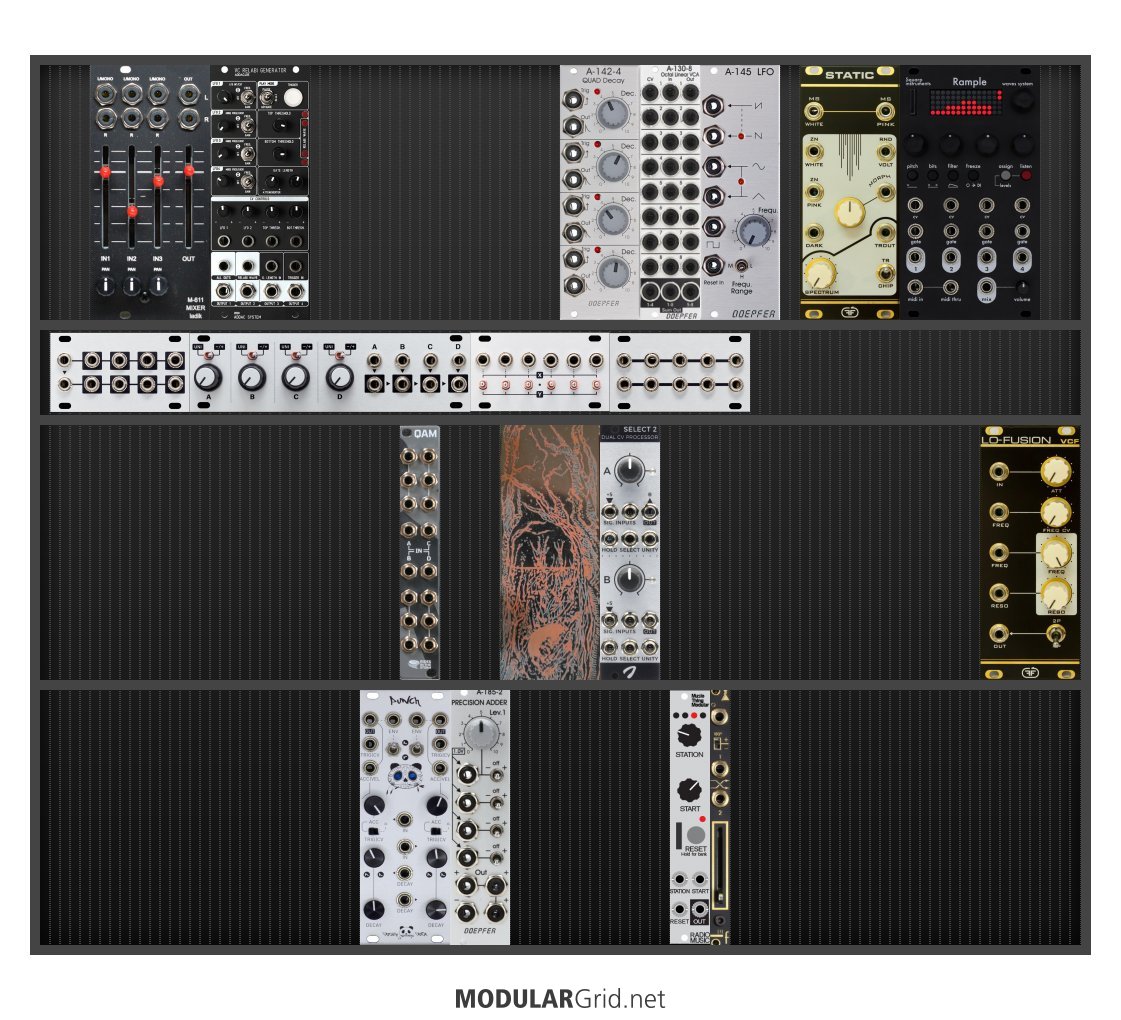
I found a drawer in my shed that is just a bit larger than 6U 84 hp and at 10cm deep, it's just perfect. I'm going to put rails and power in there (Konstant Labs StrongPWR). For drums and sequencing, I was originally looking at the LXR and a battleship sequencer. But I realized that's just not how I work. I prefer minute control over minute details of randomness a la Autechre and for that, I’ve had a great time with Pamela recently. It's a little elaborate to set up, but it's giving me great results. So I’d start my drum pod based on Pam's in combination with my Oxi. Here's a view of a possible long-term evolution. Never mind the layout - everything left of the gap is what I already have and right could be added:
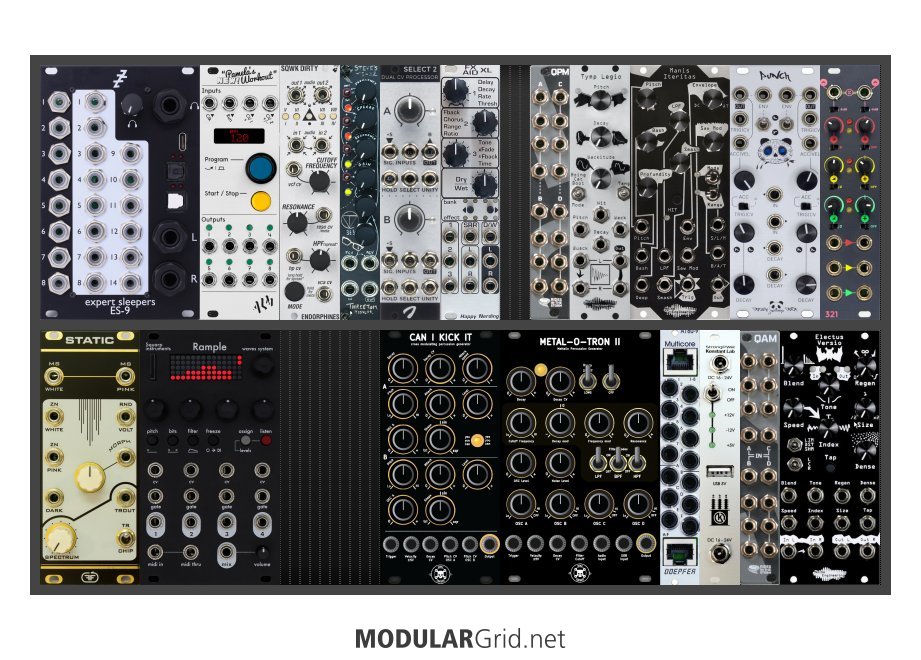
I'm adding Tymp Legio and two Skull&Circuits modules for drums. The latter sound very promising and versatile. The former… I really love my current Versio. That's why I’m adding a second here as well. And a Manis Iteritas for the bass part (which could also be done with Skull's Can I Kick It, I think). Punch is there to combine with the noise module.
The existing 7U would then gain some free space, which I could fill up for example like this (same idea - left is existing, right is added):
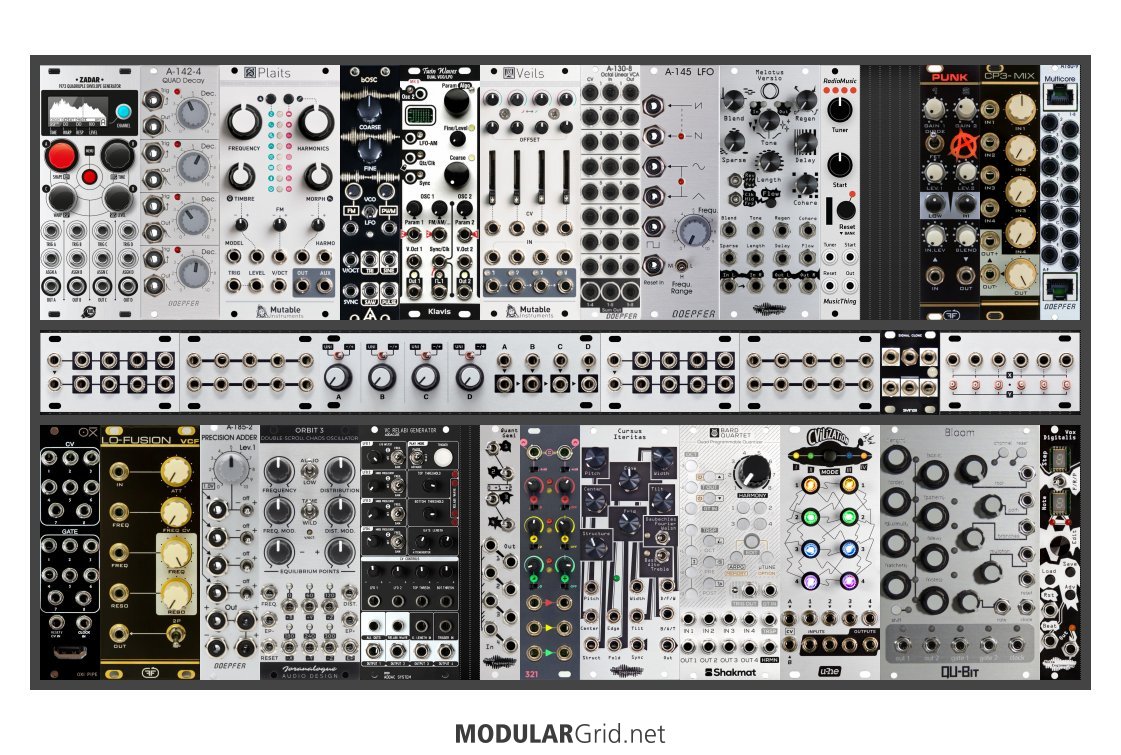
The CP3 would replace the Ladik mixer, which I’m barely using as I send everything via the ES-9 to AUM on an iPad. Punk - it's visually great (and sounds great, too) and I can always use more effects.
An important addition is the NE (again!) Vox Digitalis, which I’m planning to use as a sort of microsequencer or triggered by Pam's (hence the RJ45 interconnect, btw). EN Cursus is there as one idea to expand the sonic palette.
Then I want something to experiment with evolving melodies. I haven't decided on the right module yet. That Bard Quarter (also useful as a quant), CVlization and Bloom are there as a kind of mental support that each of those are interesting in there own right.
What do you think?
Both will be powered on the same electrical circuit in the home, sharing grounds. I hope that is sufficient to use both racks interconnected in many ways? I do have interference at the moment from time to time, when I connect the USB of my iPad to the ES-9. I'm hoping that Konstant's filtered bus boards could help with that.

